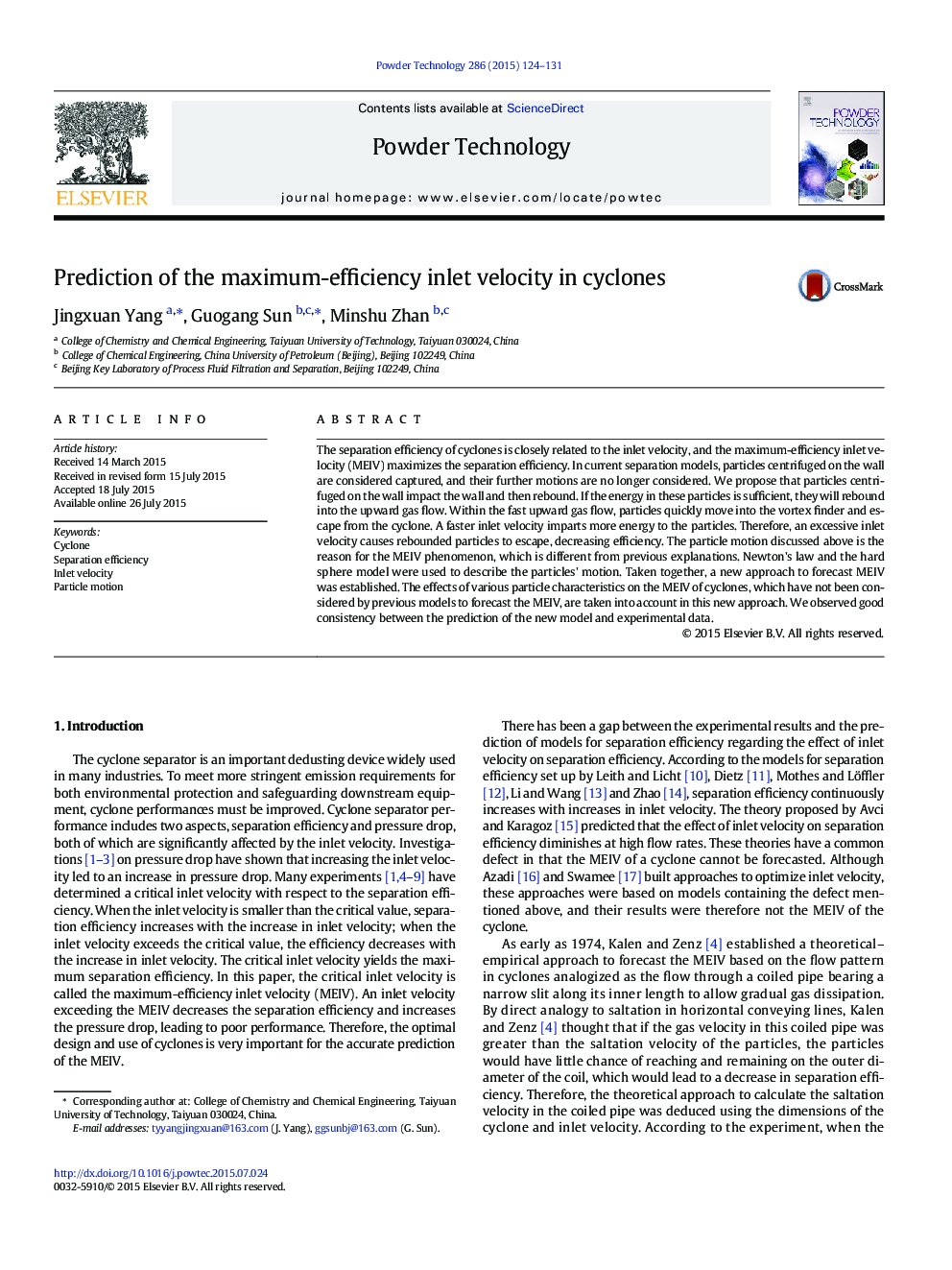| Article ID | Journal | Published Year | Pages | File Type |
|---|---|---|---|---|
| 235213 | Powder Technology | 2015 | 8 Pages |
•Particle motion which is different from the present separation models is described.•A different reason for the maximum efficiency inlet velocity is explained.•A new approach to calculate the maximum efficiency inlet velocity is set up.•The approach considers the effect of various characteristics of particles.
The separation efficiency of cyclones is closely related to the inlet velocity, and the maximum-efficiency inlet velocity (MEIV) maximizes the separation efficiency. In current separation models, particles centrifuged on the wall are considered captured, and their further motions are no longer considered. We propose that particles centrifuged on the wall impact the wall and then rebound. If the energy in these particles is sufficient, they will rebound into the upward gas flow. Within the fast upward gas flow, particles quickly move into the vortex finder and escape from the cyclone. A faster inlet velocity imparts more energy to the particles. Therefore, an excessive inlet velocity causes rebounded particles to escape, decreasing efficiency. The particle motion discussed above is the reason for the MEIV phenomenon, which is different from previous explanations. Newton's law and the hard sphere model were used to describe the particles' motion. Taken together, a new approach to forecast MEIV was established. The effects of various particle characteristics on the MEIV of cyclones, which have not been considered by previous models to forecast the MEIV, are taken into account in this new approach. We observed good consistency between the prediction of the new model and experimental data.
Graphical abstractFigure optionsDownload full-size imageDownload as PowerPoint slide
